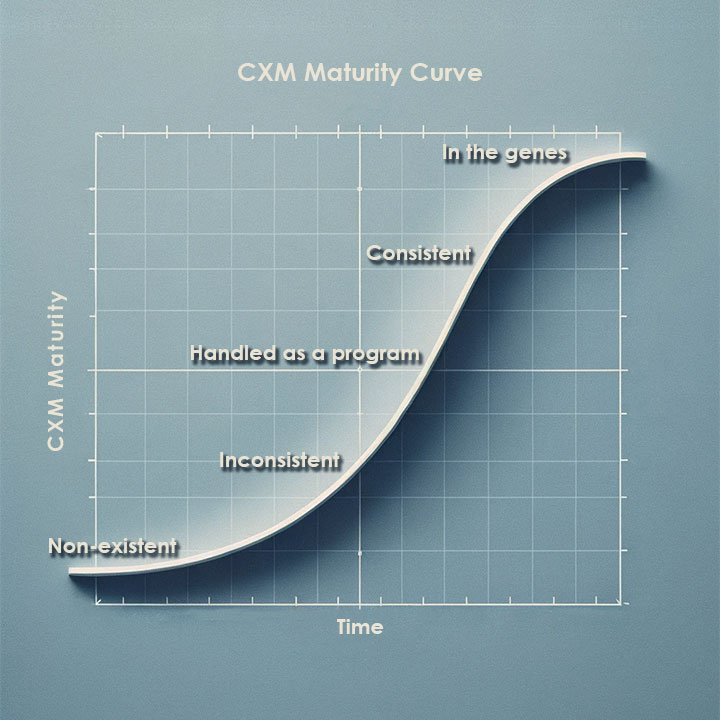CXM Transformation

A business performance can be looked at from different perspectives, particularly when we are assessing said performance from a Customer Experience point of view. Pursuing and implementing a Customer Experience initiative is a long and complicated journey. This journey has different repercussions on many aspects of any business, particularly for organizations where customer “involvement” is usually limited to Customer Service.
Contrary to general belief, there is a clear distinction between Customer Experience and Customer Service as the former covers a much broader spectrum of activities and facets of the business compared to the latter.
Customer Service can be defined as the provision of service to customers before, during and after a purchase. It is also a “series of activities designed to enhance the level of customer satisfaction-that is, the feeling that a product or service has met the customer expectation” (Turban, Lee, King, & Chung, 2002). It is quite different from what Customer Experience is and stands for, which is the sum of all experiences a customer has with a supplier of goods and/or services, over the duration of their relationship with that supplier. This can include awareness, discovery, attraction, interaction, purchase, use, cultivation and advocacy. It is not limited to supporting a customer when a problem arises after the purchase; it covers all the interactions an organization has with its customers before, during and after the purchase. As a matter of fact, Customer Service is part of Customer experience!
Transforming an organization from a Customer Service oriented business to a Customer Experience oriented one has become essential, but it is far from being easy. Generally speaking, there are 4 major steps organizations need to complete in order to achieve and optimize the transformation.
The first step will be to choose and define the overall Customer Experience architecture the organization needs to adopt. The step covers:
- Vision: defining a clear vision for the ideal customer experience, including a change story to underline the importance of delivering on goals;
- Governance: building a decision structure to align priorities and actions;
- Initiative road map: a portfolio of activities that will deliver on the vision and defines clear performance accountability;
- Metrics and initiative objectives: selecting the soft and hard measures that will indicate and measure progress;
- Change management principles: defining and identifying ways for the organization to work differently in order to achieve what can’t be accomplished with today’s ways of working.
The second step will be to draft a road map to address change with the following aspects:
- Organizational approach: Is it better to push change functionally or cross-functionally, with a journey-by-journey focus?
- Sequencing: Is it better to start in one functional area, in one journey, and show what’s possible before rolling out changes, or to launch in all areas at the outset?
- Impact timing: Should you pick low-hanging fruit first, though it may have less impact, or move aggressively on big-ticket items?
The third step consists of securing buy-in and building momentum by blending top-down and bottom-up activities and by addressing hard performance and softer health.
Lastly, the forth step looks at why the actual transformation should start and identifying the right change agents that can lead the initiative and secure quick and tangible wins.
Finally, it is imperative that organizations develop and change in order to help the Customer Experience transformation initiatives be successful, both internally and externally. From people, to processes, to technology, to customer relations and management, all the pillars of Customer Experience must adapt and transform in order to deliver the right experience.
Let's Chat!
Tell me how I can help you?
Got questions or ideas? Want a free consult? I’m just a click away. Reach out and let’s kickstart your success journey!

